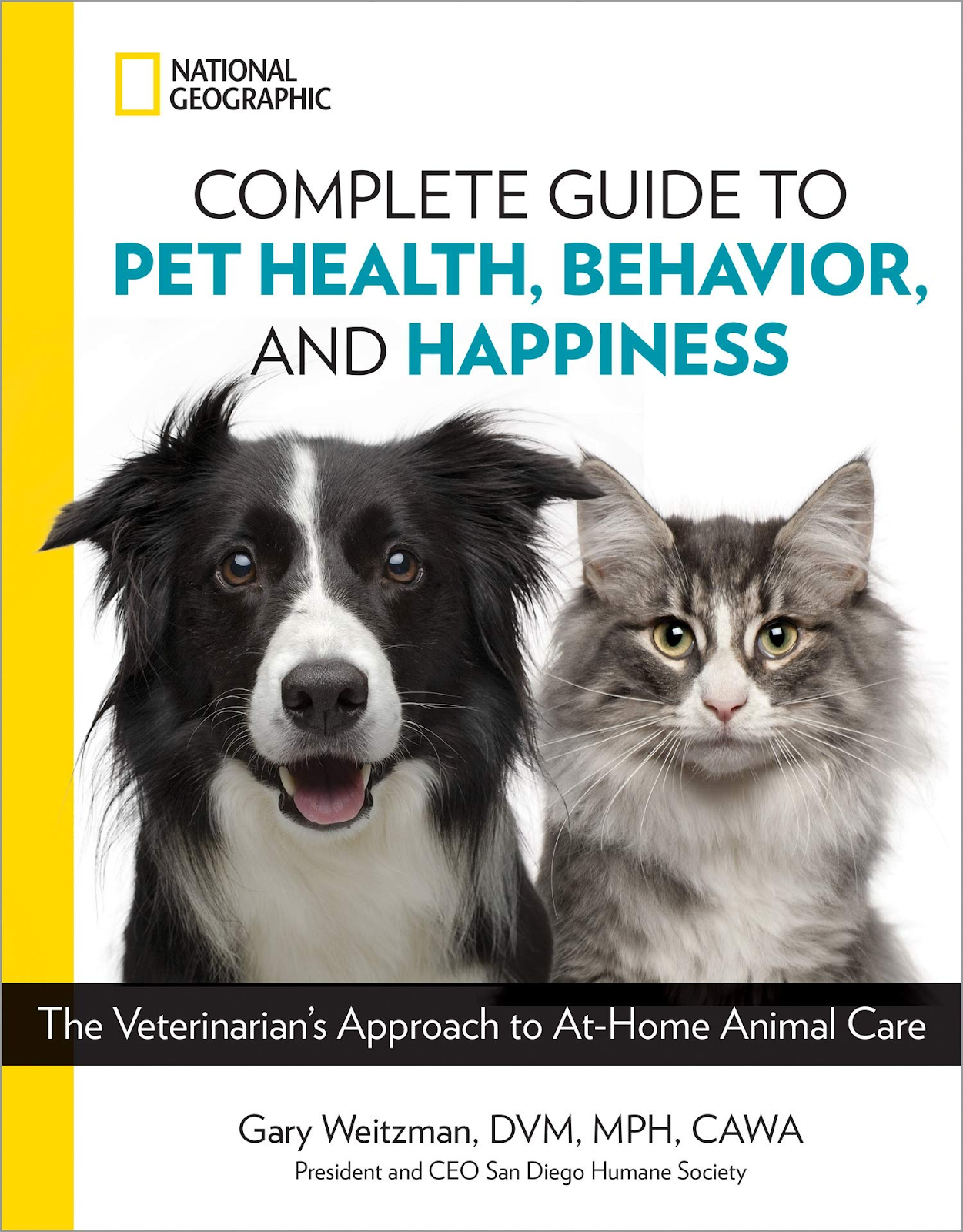I may not have kids of my own, but I am a “Pawrent” to two adorable dogs named Nemo and Dory. Both were rescued from a shelter when they were between seven and nine months in age and they are the first pets I’ve had in my adult life. I wouldn’t say that we were winging it when we brought Nemo and Dory into our home, but we certainly didn’t have a resource as comprehensive as National Geographic’s Complete Guide to Pet Health, Behavior, and Happiness by Gary Weitzman, President and CEO of the San Diego Humane Society.
While my pet of choice will always be dogs, the book really goes in depth on most pets you can think of, being almost equally inclusive to cats and also including smaller pets like rodents, reptiles, fish, and birds. It covers everything you could possibly imagine from before you bring a pet into your home to what to expect when the time comes to say goodbye.
This soft cover book is about the height and length of a National Geographic magazine, but with substantial width at nearly 400 pages. Like the magazine, the pages are broken into two text columns with supporting pictures, often very adorable, and boxes of highlighted information typically to reinforce helpful tips or debunking common myths, such as it is okay to have a poinsettia plant during the holidays in a home with pets.
There are 37 chapters split between 6 sections, making each topic quick and easy to reference when needed, although I do recommend reading it cover-to-cover for the sections that apply to the type of pet you have or are looking into. It really is a comprehensive one-stop resource for everything you could ever need to know, written by a very experienced Veterinarian and a “Pawrent” himself.
The first section covers everything you should know and all of the questions you should ask before bringing a pet into your life, as well as the most responsible ways to get one. This is followed by a section on general health and nutrition, debunking some popular myths about dog food and revealing that there isn’t a one-size-fits-all solution. The section most relevant to me was called “Pet Behavior and Training,” as both of my doggies came with their own issues from their time before they were in our care. Sections four and five help prepare you for emergencies and gives you knowledge that could save lots of money on unnecessary vet bills, followed by an extensive section on common health issues for pets. The final section is hard to read without getting teary eyed and prematurely grieving for your precious animal companions as it covers aging and death. There are several useful appendices that can also come in handy when needed.
Vets and animal shelters should recommend that all pet owners have a copy of National Geographic’s Complete Guide to Pet Health, Behavior, and Happiness. It’s full of vital information that people should know before taking on the responsibility of caring for a pet, but also great resources that can save you time and money in the future. Gary Weitzman breaks down the information in a way that’s easy to digest and understand, but that also speaks to your heart.

